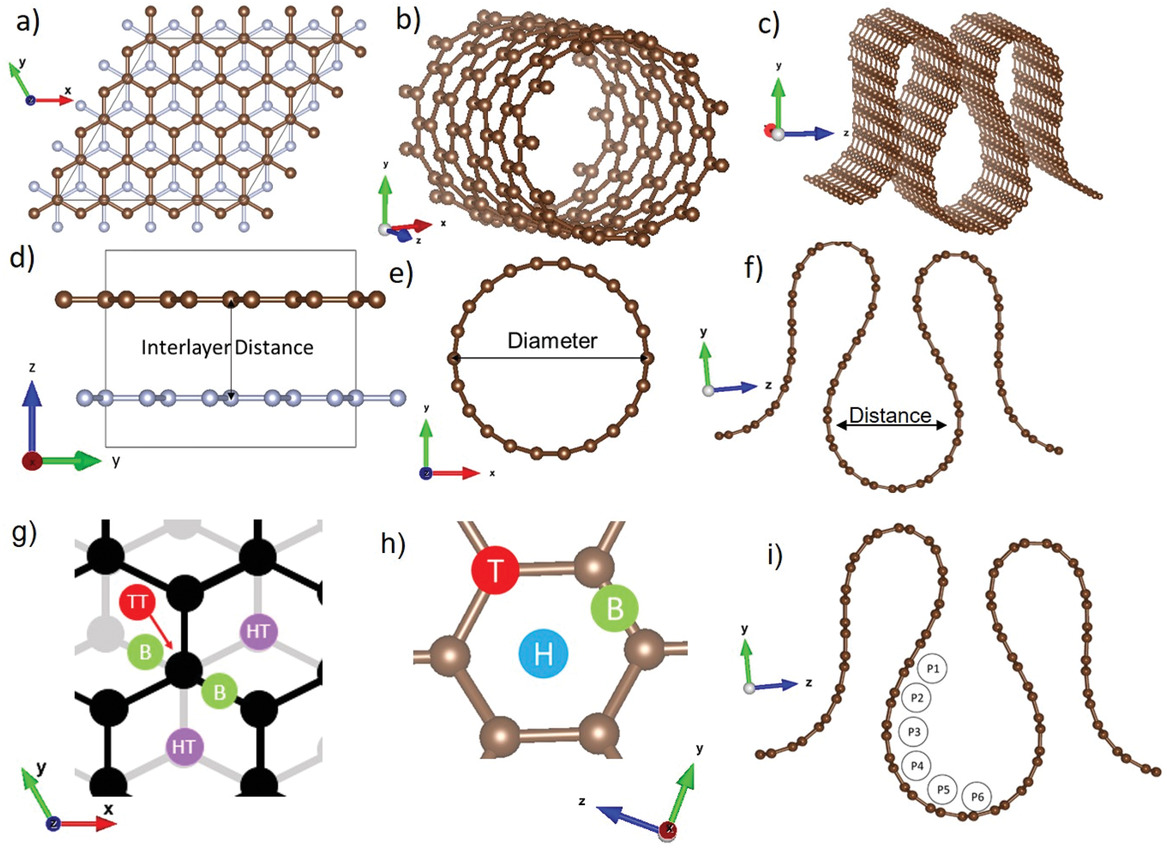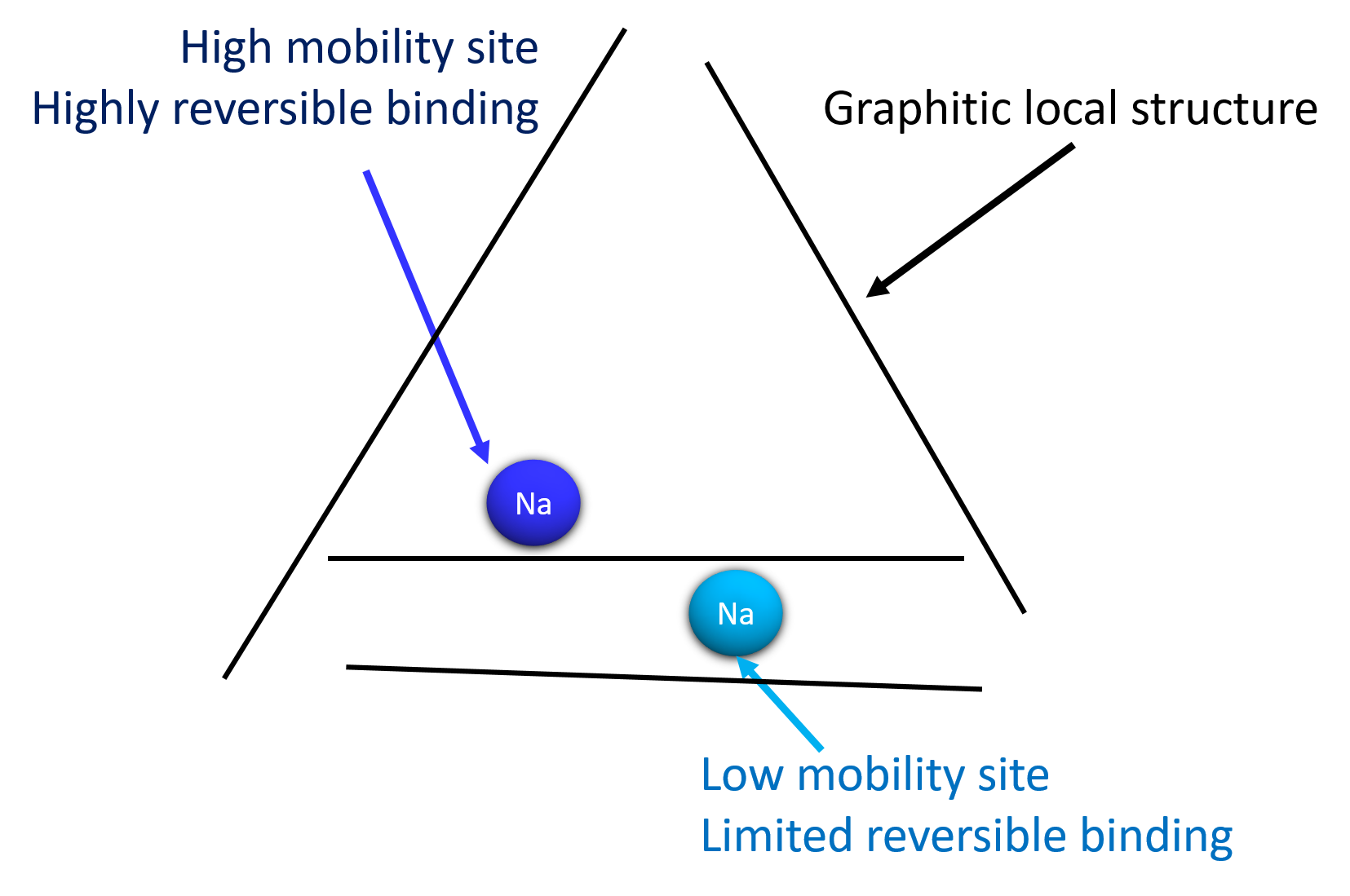Using the specialised X-ray diffraction equipment at the Materials Characterisation Lab at ISIS (MCL), a collaboration involving scientists from the University of Surrey and three London universities has been able to investigate the effect of the different structures in hard carbons on ionic diffusion. Expanding on this with muon spectroscopy on EMU, they have also been able to test the materials after acting as an anode in a sodium-ion battery, explaining why these materials exhibit poor performance in practical testing.
Hard carbons are complex structures made up of graphite-like layers, orientated randomly, forming a mixture of stacks, sheets, pores and nanopores. Conventional graphite is used in lithium ion batteries as an anode, but is not as effective for ions such as sodium or potassium. As these are much less rare than lithium, there is considerable motivation to find an alternative to make sodium/potassium-ion batteries a feasible alternative. Hard carbons can also be produced from biomass, which opens up the possibility of sustainable battery production.
For these hard carbons to be used as battery anodes, they must provide storage space for the metal ions, and enable them to move within the structure reversibly. Although testing of sodium- and potassium-ion batteries shows initial success, there have been challenges around repeating the cycling. To understand why, the group zoomed into the atomic scale to see what was going on.
Their first study, published in Advanced Functional Materials, used computational modelling to build an atom-level view of where the metal ions sit in two models of the type of carbon structures found, using X-ray diffraction, in hard carbons: planar graphite-like layers, and cylindrical pores. They also looked at how far apart the layers would need to be for the metal ions to sit between them, and extended their model to consider areas containing both flat and curved regions.
The specialised X-ray diffraction capability in the MCL enables both wide-angle X-ray diffraction, and small-angle X-ray diffraction. The combination of these techniques enabled the researchers to build a complete picture of the different types of carbon structure inside the material. These experiments provided the foundation for the computational modelling that followed.
By considering the binding energy of individual ions inside the carbon structures, the scientists were able to investigate which sites were preferable for the ions to sit, and what barriers prevent ionic movement. The effect of the curvature, layer spacing, and pore diameters were clearly seen in the strength of the bonds keeping the metal ions inside the structure.

Schematic representations of the a) planar graphitic layer model and b) cylindrical pore (single‐walled carbon nanotube) model, and c) mixed planar and curved models, with d–f) the interlayer distances and diameter, respectively, for each model. Reproduced under CC BY 4.0 from DOI: 10.1002/adfm.201908209.
They found that lithium ions bound most strongly to the carbon lattice in all models, with sodium and potassium requiring larger spacing between the layers for energetically favourable bond formation. This agrees with previous experimental studies where sodium and potassium storage capacity is higher in expanded graphitic layers than in pristine graphite.
Comparing these results with the cylindrical models, they found the metals all bound more strongly in the planar structure, rather than when the surface was curved. This may suggest that the curved structures may be more favourable for battery applications, as the ions would be easier to move in and out of the structure. This was confirmed when they looked at metal diffusion in the hard carbon models, and found that the curved surfaces notably increased diffusion.
Building on these computational results, the group went on to construct a sodium-ion battery cell based on hard carbons, and test it using muon spectroscopy. The hard carbon used in this study consisted of stacks of 3-4 graphite-like layers. On charging/discharging, they found that the sodium ions were being incorporated into the structure via two different mechanisms, thought to be the ions firstly sitting between the graphite layers, and then forming metallic clusters in the pores.
Although reversible, the capacity of the battery was seen to decrease with higher charging rates. To understand this decrease in capacity, the group studied two samples on EMU to investigate sodium diffusion. One sample was full of sodium ions, and the other just contained those which remained after discharge at a high rate, representing the ions “stuck" inside, causing the reduction in capacity.
Their results, published in the Journal of Materials Chemistry A, showed that the structure can be described as containing two different types of sodium sites: a high mobility site likely to be located in pores, with the sodium interacting with a single graphitic layer, and a low mobility site, where the sodium ion sits between the layers, or on a defect site, with limited reversible capacity, as shown below.

On the low mobility sites, they found that the ions were actually free to move short distances, indicating that the longer range diffusion pathways are blocked by side reactions that occur during battery cycling. This insight is crucial to understanding how the structure of these materials influences their performance, and where improvements could be made to create battery technology with widespread applications.
The research, enabled by EPSRC ISCF Wave 1 (EP/R021554/1) funding, has enabled three groups – Dr Qiong Cai's group at University of Surrey, Professor Magada Titirici's group at Imperial College London, and Professor Alan Drew's group at Queen Mary University of London, to work together, to unravel the sodium-ion storage mechanisms in hard carbons.
Further information
The full papers referred to in this article can be found at DOIs: 10.1002/adfm.201908209 and 10.1039/C9TA10113F
In addition to these, the group has published other papers using the ISIS Materials Characterisation Laboratory investigating different carbon materials. In these, their focus was the structure of the materials, rather than the dynamics: 10.1002/adfm.201901072, 10.1039/C9TA11369J
